

This is the second in a series of interviews of our growers by wine writer, scientist, and critic Dr. Jamie Goode. You can also find his video tasting reviews of the wines mentioned in this interview by subscribing to his Instagram feed @drjamiegoode or our own @ericsolomonselections where they will be reposted. If you are curious to know more about one of our growers, drop us a line. To learn more about Ester Nin and Carles Ortiz and their wines you can read about their project here and follow them on Instagram to see what they’re up to.
The story of Nin-Ortiz is a lovely one. It’s of two people with a shared vision finding each other and then building a winery that’s among the best in the Priorat region. I caught up with the couple – Ester Nin and Carles Ortiz – to taste through some wines and learn more about their venture. ‘We came to Priorat for different reasons,’ says Nin. Hailing from Penedès, she moved to Priorat in 2000 after studying enology at the University of Tarragona. She landed a job with Mas Martinet. Later, Nin moved to her current role as viticulturist for Daphne Glorian at Clos i Terrasses.
She began Nit de Nin, her own side-project, in 2003, and bought a 1.5-hectare parcel of old vines (Garnachas Tinto and Peluda, plus Cariñena) in Mas d’En Caçador, which is one of the highest vineyards in the region (650 meters). It has north-facing soils of blue and black schist.
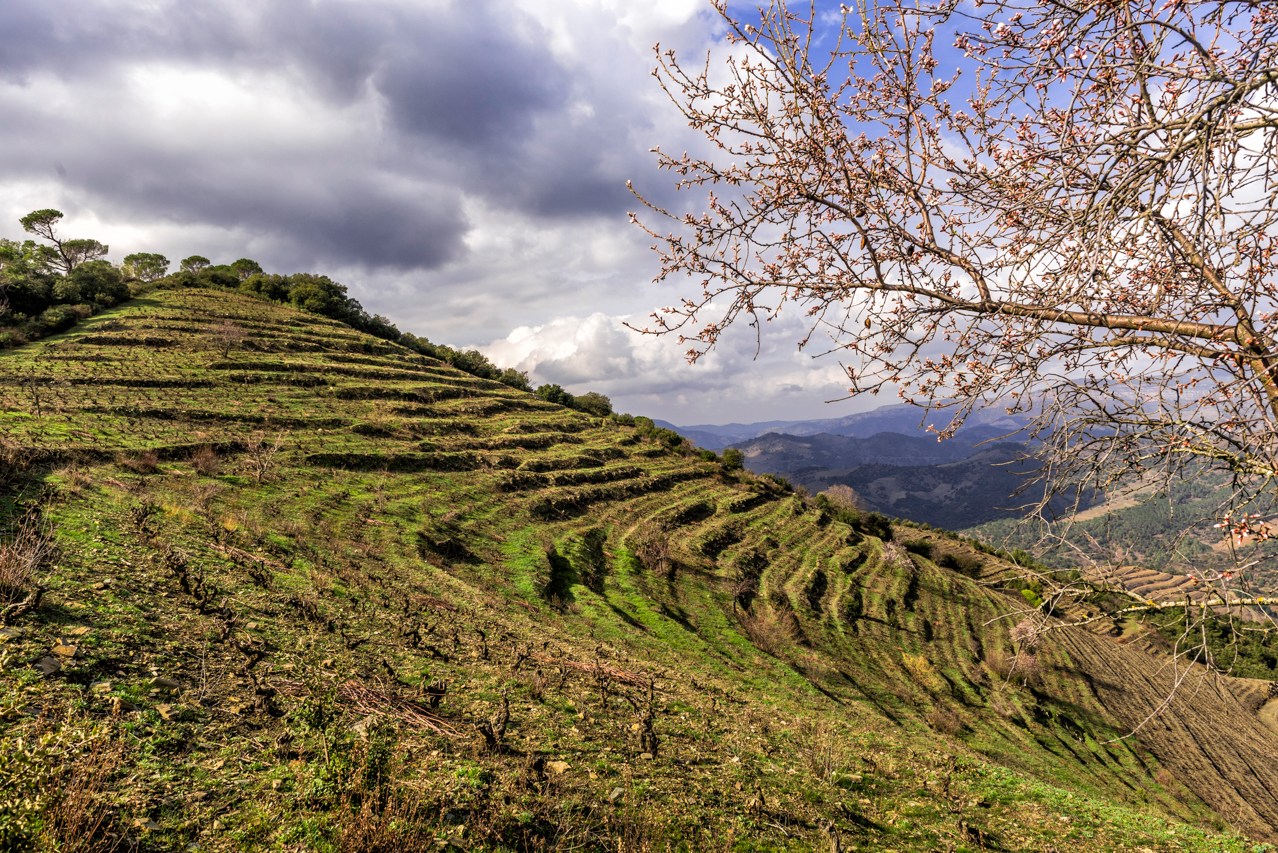
A tiny part of the majestic Mas d’En Caçador vineyard. @2017 Estanis Nuñez, used with permission.
The other half of Nin-Ortiz is Carles Ortiz. He moved to the region from Barcelona, leaving behind the city to grow grapes. Ortiz owned 18 hectares of Finca Les Planetes and was selling grapes. The two met because Clos i Terrasses was the destination for some of these grapes at the time. The Nin-Ortiz romance led to the merging of their vineyard holdings, and they now make wines under the Familia Nin-Ortiz label. ‘We started together in 2007, and our first vintage together with Planetes was in 2008,’ says Nin. ‘Here we are now!’ They make six different wines in Priorat and two wines in Penedès. Her family is from there, and in addition to owning some vineyards, she’s also planted some new ones.
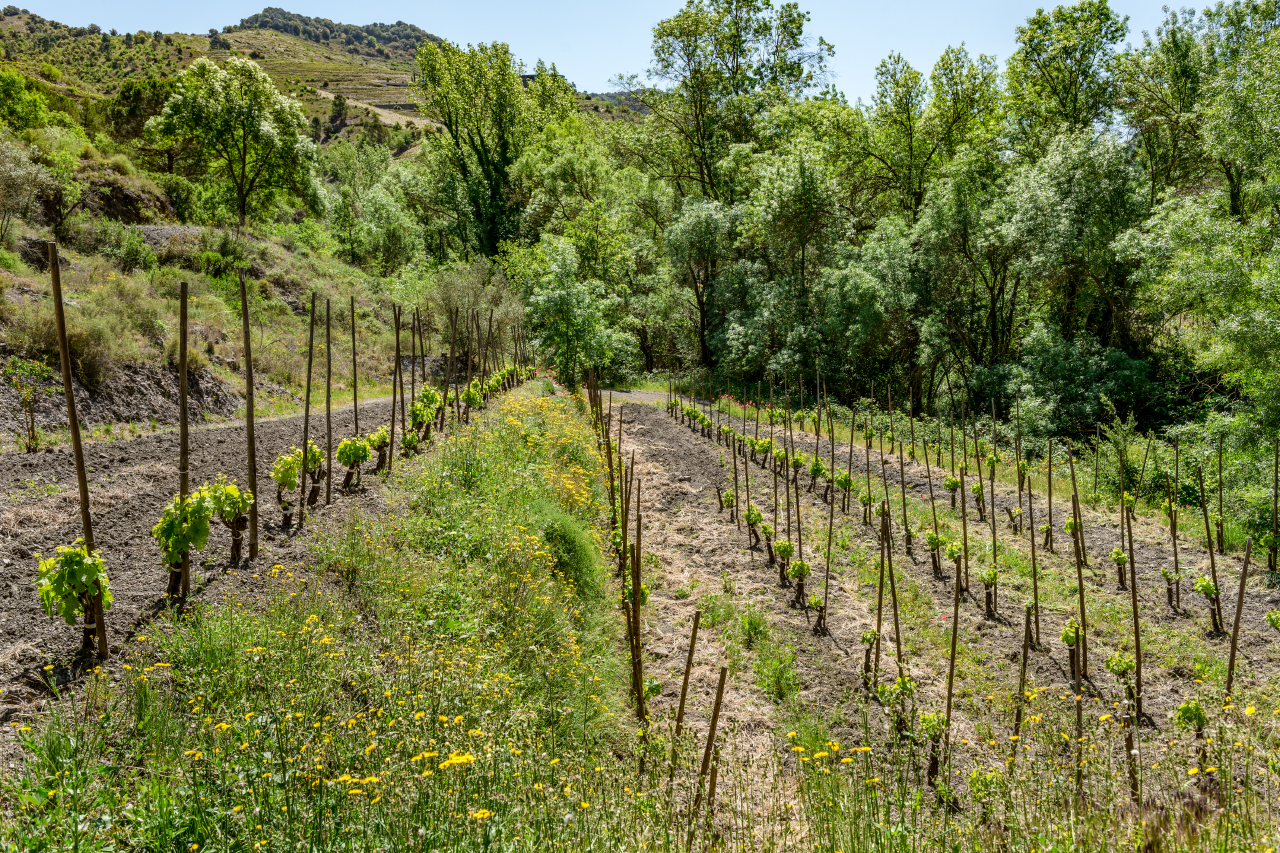
Finca Les Planetes. @2017 Estanin Nuñez, used with permission.
In Priorat, they have two levels of wine. Two Nit de Nin wines are made from the very old vineyards: Mas d’en Caçador and Coma d’en Romeu (a newly purchased site in Porrera). Then, from the younger vines at Planetes, they make three wines. ‘Planetes is one Finca with 18 hectares,’ says Ortiz. ‘Seven hectares are planted with vines, and we have Garnacha Tinto, Garnacha Peluda, and Carignan Tinto and Blanco.’
As you’d expect, viticulture is very important to them. ‘In the vineyard, we work organically,’ says Nin. ‘We have a lot of respect for the soil. We feel that autochthonous grapes are best at expressing the soil.’ In the cellar, they use native yeasts but will intervene where needed. ‘We use sulfites, and we use technology in the cellar if it is necessary,’ she says. ‘But we show maximum respect for the skin of the grape. We want to keep the natural flavors.’
In 2007 they planted Carignan in Planetes, using the traditional planting method at a high density on the slope, called costers, rather than the more modern way of terracing. ‘Normally, people say it’s hard to make good wine with Carignan,’ says Nin. ‘But if you plant at high density – 10,000 vines/hectare – you get very small grapes, and the stems are normally ripe.’ So they use the stems of the Carignan in the Partida cuvée. Stems help with the sensation of acidity, and she says that this is very important in a dry area. ‘In Priorat, we have around 400 mm rain/year. During the growing season, we have maximum, 200 mm. Normally it’s 100 mm between April and August.’
Working with these old sloped vineyards, called costers, rather than the more modern terraces, means using herbicides because they aren’t suited to machines. In the past, they were worked with mules, and Ortiz revived this practice working with mules in 2007. ‘It was the first time since the 1960s that mules were used in Porrera,’ says Nin, ‘and all the people came to see Carlos with the mule.’
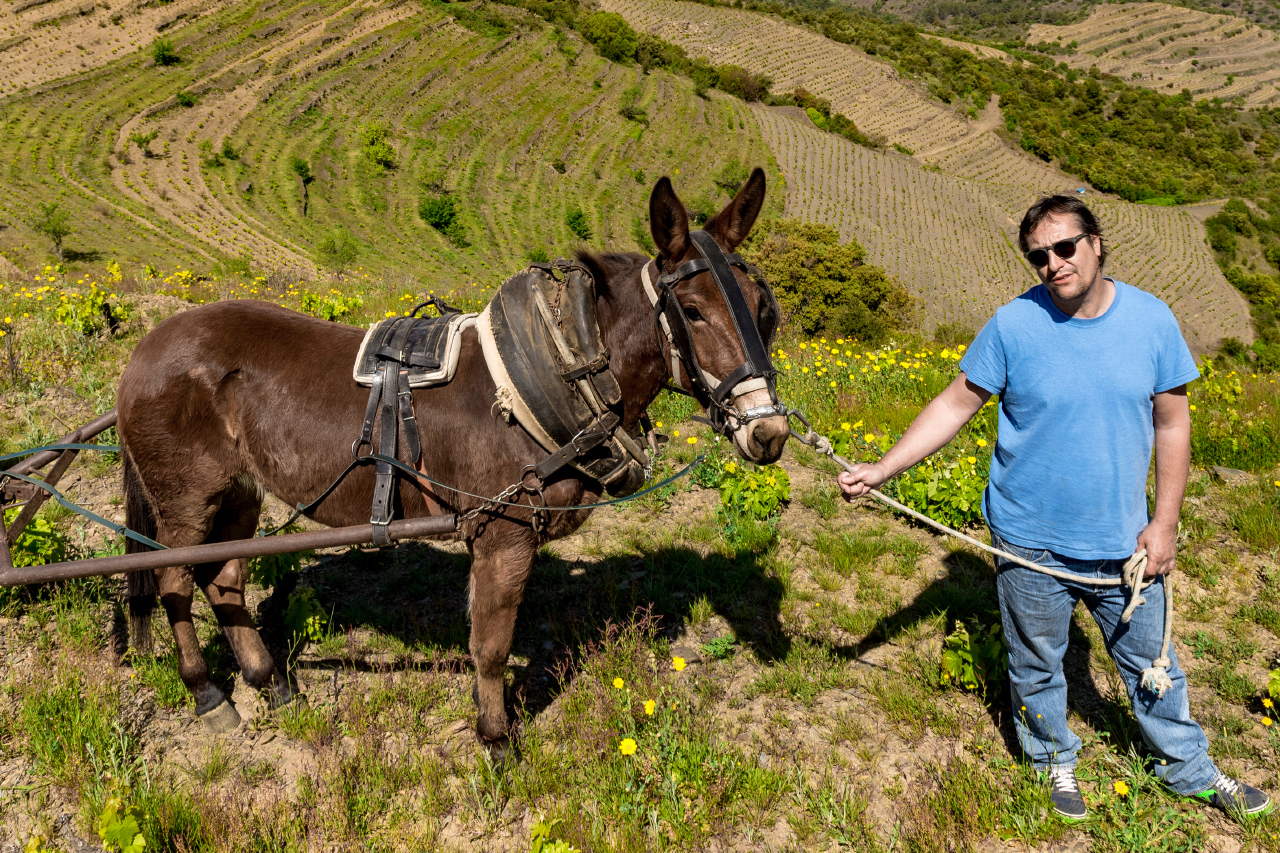
Carles with the mule in Mas d’En Caçador. @2017 Estanis Nuñez, used with permission.
‘I’m from the city – I’m from Barcelona,’ says Ortiz, ‘and I recuperated the work with mules in Porrera. Everyone said to me, you are crazy.’
‘Now it’s possible to use herbicides, but in five more years, it will probably not be possible. In years like 2019, a very dry year, we see the differences between vineyards with herbicide or not. It is incredible to see,’ says Ortiz. ‘The plants preserve the humidity from the soil. If you work the soil with a mule, it is possible to put the compost in, and the character of the old vines is completely different. This means taking a long-term view, rather than just making money now. But it is our philosophy.’ Ortiz says he bought Planetes in 1998 and has been farming organically since 2000. But unfortunately, organics is still rare in the region.
How do they keep the freshness in the wine in a warm climate? ‘First, when the grapes arrive in the cellar, it is very important to select out the raisins,’ she says. They have a team of 20 sorting the grapes. ‘Normally 10 people are used to pick the grapes and 20 to select them.’ This is labor-intensive work. ‘It is crazy,’ says Ortiz. ‘We have 20 people in the cellar for 25 days.’ It’s also costly. ‘In one day, we might process 1500 kg of grapes and select out 100 kg of grapes,’ says Ortiz.
‘It is very important for the tannins,’ says Nin. ‘Raisins make very rustic tannins in the wine. It is the sensation of rusticity.’
They do a long maceration of four weeks and then press. They punch down once a day: a small pigeage. Nin says they have tried to reduce the maceration to two weeks, but she prefers four weeks if the grapes are in perfect condition.
The acidity in the wine is all natural. In Planetes, she thinks the sensation of acidity is because of the stems. The picking date is also critical. ‘In three days, we can have a lot of sun, and you can lose two points of acidity in three days.’
Ortiz says that the most important thing for choosing harvest date is pH. ‘pH is important for natural balance and preserving the wine for a long time in bottle,’ he says. ‘The magic of the terroir and climate in Priorat is the pH.’ The 2018 Planetes was picked at a pH of 3.2 and acid levels of 4.5 g/L. Normally they have 0.5 g/L of malic acid, which is low (this is a warm area), and so the pH doesn’t rise much after fermentation.
In 2019 they had two days at 42 C at the beginning of July. Some 20 years old vines died. For some vines, they dropped the grapes to help them survive because their leaves dried. ‘It was like a fire,’ she recalls. Normally, they never use irrigation, but in some plots, they had to just to keep the vines alive. Organic farming has helped the vines resist drought better. ‘We produce our own compost to put in the soil because it has the capacity to preserve the moisture in the soil,’ says Nin. ‘This is really important to help the plants in the absence of irrigation.’ Ortiz adds, ‘it improves the capacity of the soils to retain water.’
Most students of wine learn that one of the distinctive features of Priorat is the soils, which are schist, known locally as licorella. But this isn’t a uniform soil type, and there is a classification of different sorts of schist. ‘At this moment in Priorat, ten different soils are recognized, with different compositions,’ says Ortiz. Mas d’en Caçador and Coma d’en Romeu are separated by 2 km, but their schists were formed 100 million years apart.
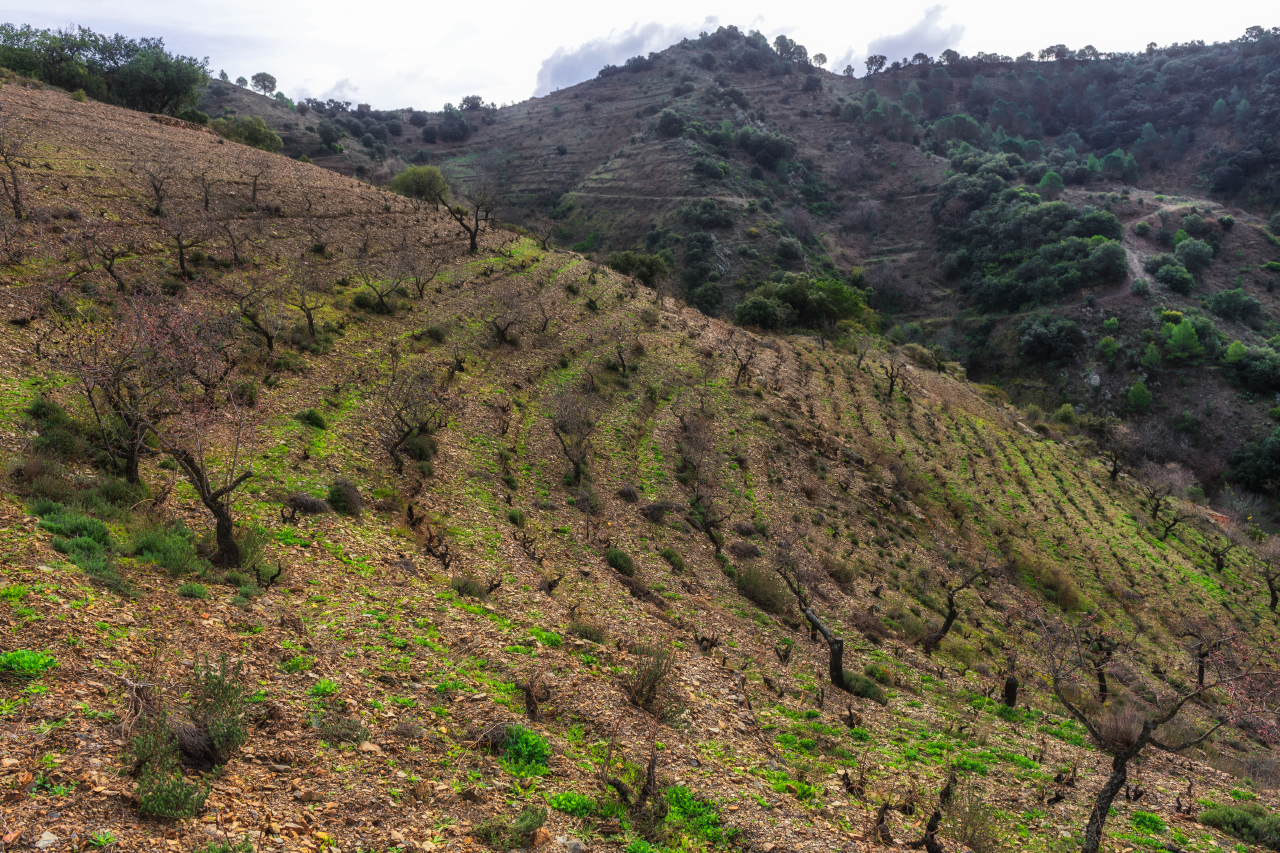
Coma d’En Romeu. @2017 Estanin Nuñez, used with permission.
In Planetes the schist has more iron. ‘This makes wines that are deeper, with more spices, and more dark,’ says Nin. ‘This soil is very hard. It is impossible to break by the hand. But at Mas d’en Caçador, it is possible to break the schist by hand and has some clay in between the different layers of schist. This is very important for the character of the soil.’
‘Coma d’en Romeu is totally different,’ adds Ortiz. ‘It is brown, and it has silica.’
Mas d’en Caçador is the same blend as Planetes, which they call the classical blend. It is Garnacha, Garnacha Peluda (‘hairy Grenache’), and Carignan. ‘Garnacha Peluda is a grape in between Garnacha and Carignan,’ says Nin. ‘Garnacha has no hairs at the bottom of the leaf, and Carignan has hairs.’ Garnacha Peluda has a leaf that looks like Garnacha, but with hairs at the bottom. ‘For me, it is a mix between Garnacha and Carignan. I love the blend of the two, because Garnacha is the grape with a lot of alcohol, and Carignan is less alcoholic and has more acidity. Hairy Garnacha is always in the middle.’ In the vineyard, it isn’t easy to see the difference. ‘We speak a lot about the changing climate, and for us, this grape is very important. In the final blend, it has less alcohol and more acidity.’
It also matures at a different rate. ‘Carignan was harvested on 27 August,’ says Ortiz, ‘but hairy Garnacha is harvested on 5 October.’ And these are in vineyards only 200 m apart. He says that even picking this late, the pH was 3.2 and potential alcohol 14%. ‘It is a grape with a long cycle, and this kind of grape is very interesting because of climate change,’ agrees Nin.
Planetes is aged in 3000 L foudres. Nit de Nin is in barrels of different sizes, and if the volume allows, a foudre might be involved. The tinajas that the Garnatxes en Amfora is aged in come from Moreno Leon in Extremadura https://tinajasmorenoleon.com/
‘We love amphorae because they preserve the personality of the grape,’ says Nin. ‘We age for 8 months. For me, it is like putting the wine in inox. The evolution of the wine is almost zero. For me, it is a way to explain the grape and the soil.’ They have two sizes: 700 and 1000 L.
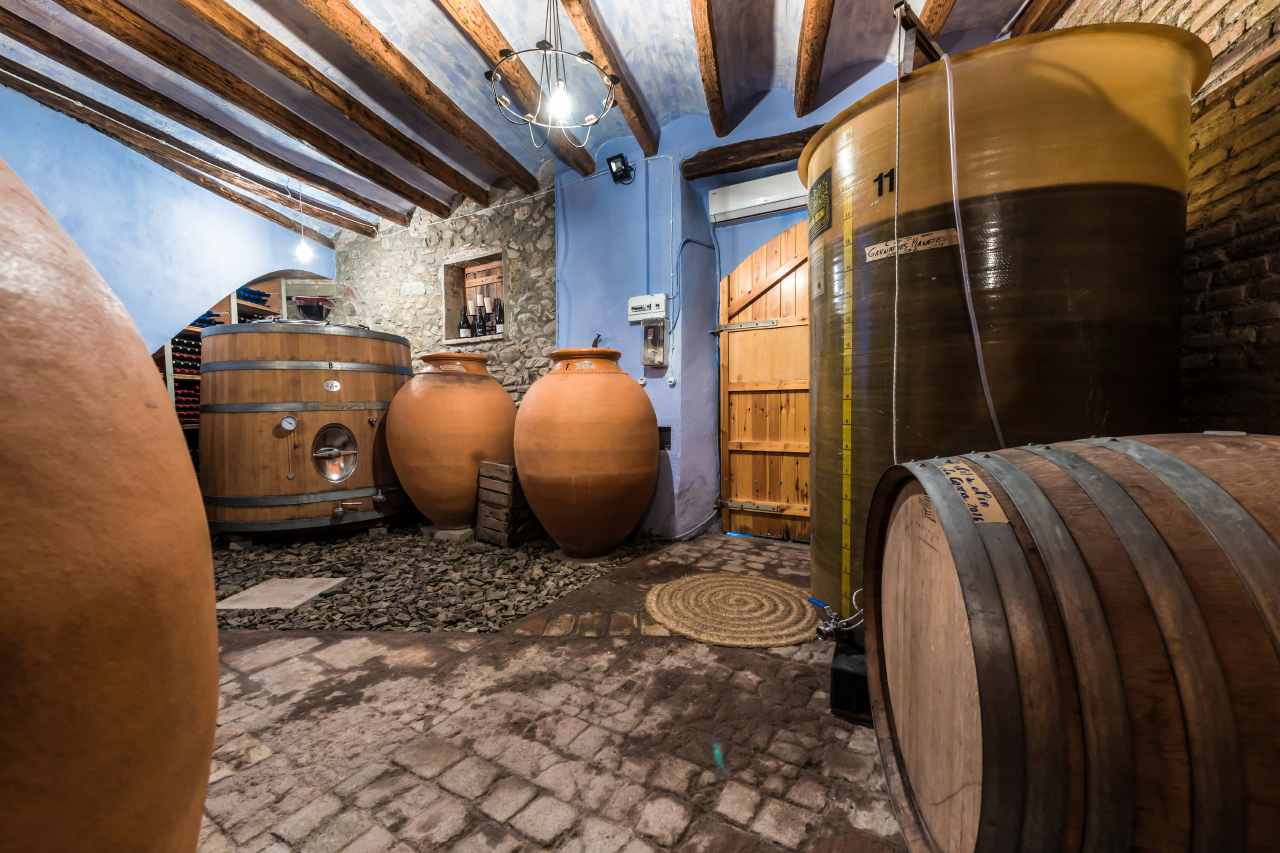
The old cellar of Nin-Ortiz that was in use until the completion of their new winery in 2020. As soon as we see it, we’ll post pictures! @2017 Estanis Nuñez, used with permission.
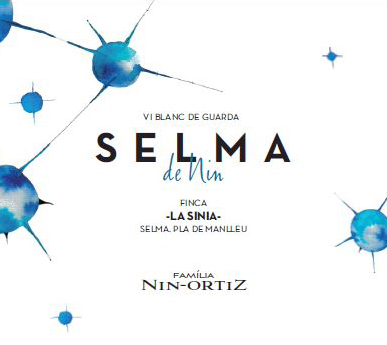 Familia Nin-Ortiz ‘Selma de Nin’ Finca La Sinia 2016 Vi de Tabula, Spain
Familia Nin-Ortiz ‘Selma de Nin’ Finca La Sinia 2016 Vi de Tabula, Spain
12.5% alcohol. This is from Penedes, and it’s a blend of Roussanne (25%), Marsanne (25%), Chenin Blanc (25%), and Perellada Montonega (25%), from clay/limestone soils at 700 m. Aged in 300 L barrels for 8-9 months, then aged in bottle before release. Wonderfully edgy aromatics of burnt match/struck flint, with some oily hints and some smoke, as well as generous citrus fruit. The palate has this lovely combination of rich, textured, sweet pear and peach fruit but also some nice lemony freshness and this amazing framing of minerals and spice. Such a remarkable wine: a paradox. Rich but fresh, mineral but succulent. 95/100
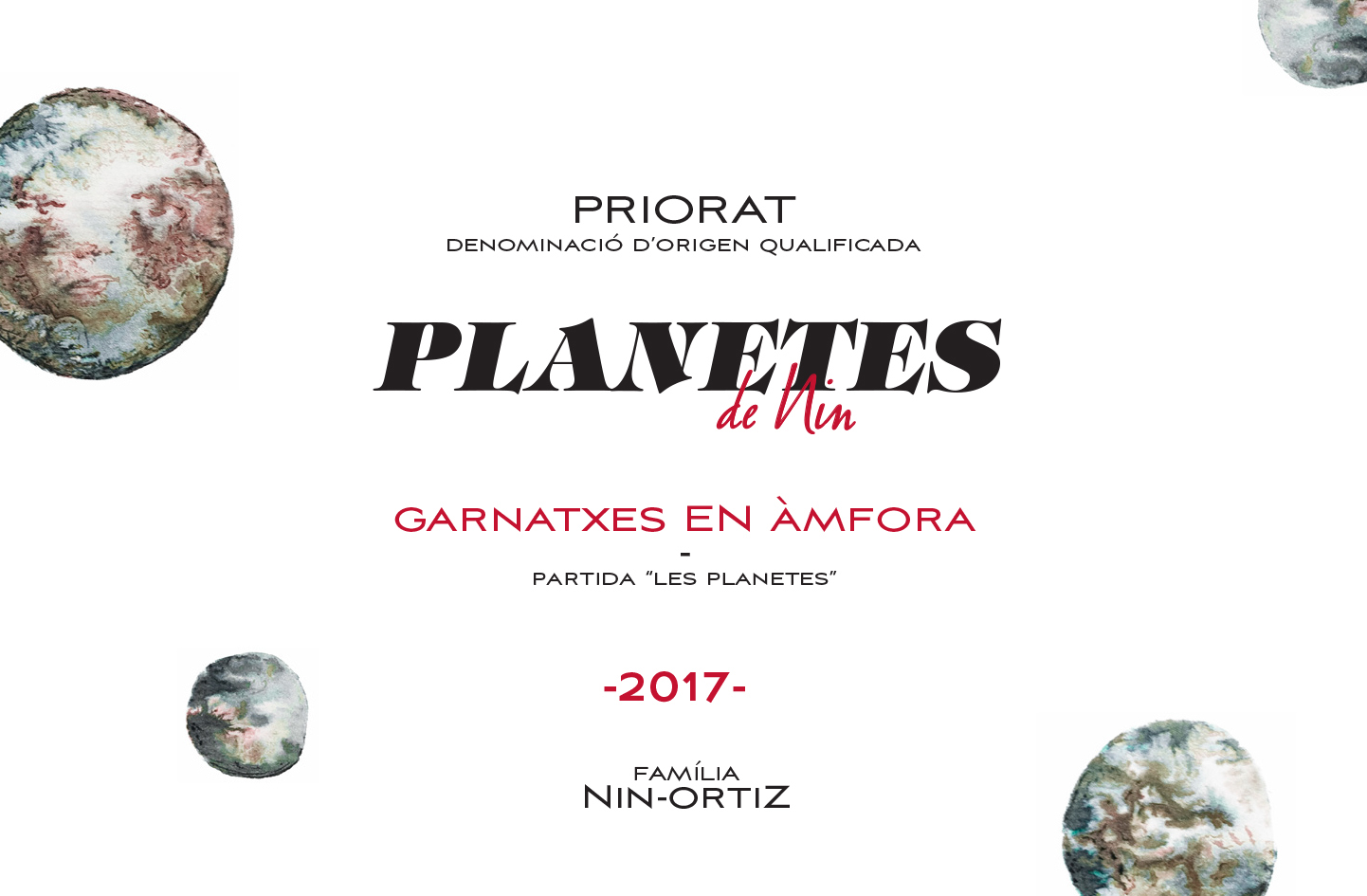 Família Nin-Ortiz Partida Planetes de Nin Garnatxes en Àmfora 2019 Priorat
Família Nin-Ortiz Partida Planetes de Nin Garnatxes en Àmfora 2019 Priorat
14.5% alcohol. This is just Garnacha and Garnacha Peluda, and it’s destemmed. Fermented in tinajas (Spanish amphorae of 700 and 1000 L). There’s just a touch of lift on the aromatic, floral nose of this wine, which shows fresh, vivid, spice-laden black cherry and blackberry fruit, with a touch of sweetness from the acidity on the palate. There’s a hint of savoury, mineral earthiness behind the pure, sweet fruit, with a nice graininess. It’s a nervous, lively wine with quite a bit of ripeness, reined in by savoury, spicy notes, a touch of meatiness, and a faint balsamic hint. This is an interesting interpretation of Priorat with amazing drinkability and appeal and lovely savoury intensity alongside the fruit. 92/100
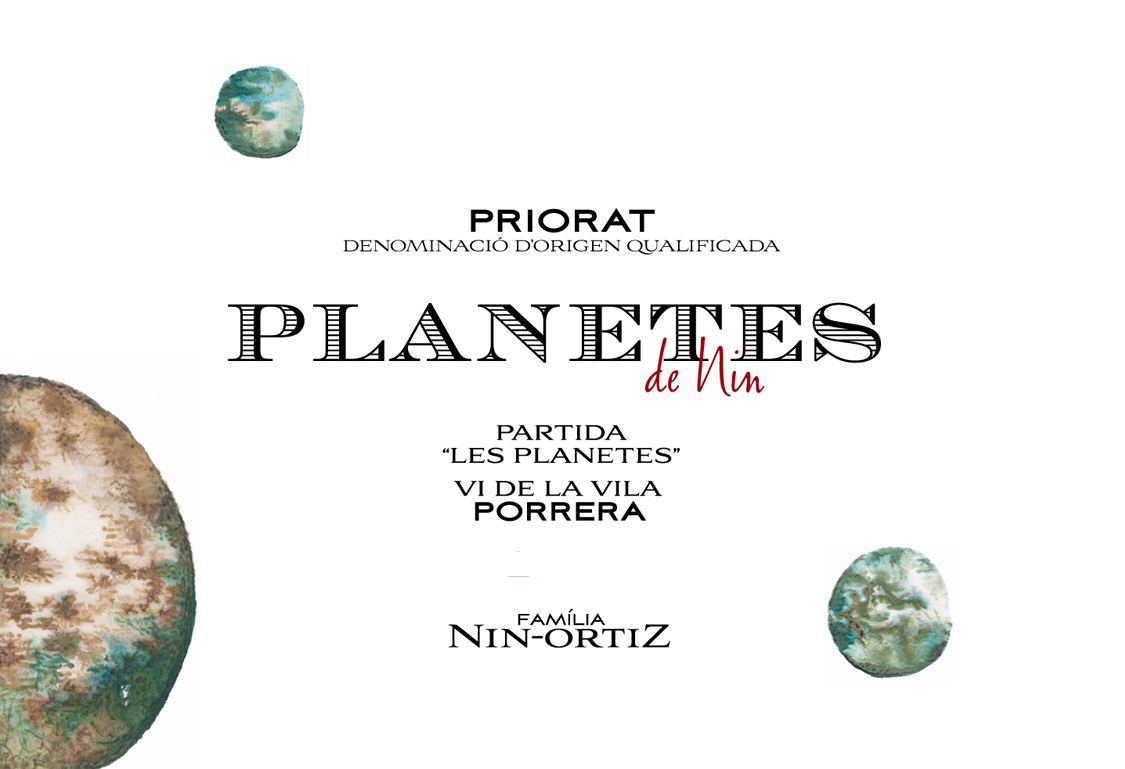 Família Nin-Ortiz Planetes de Nin Partida Les Planetes 2018 Priorat
Família Nin-Ortiz Planetes de Nin Partida Les Planetes 2018 Priorat
14.5% alcohol. 35% Garnacha, 25% Garnacha Peluda and 30% Carignan, with the Carignan portion whole bunch. This is a dense, powerful wine, but one that balances ripe fruit with some savoury character. It’s grainy, tannic, and dense but not too heavy, with blackberry and black cherry fruit, with a touch of blackcurrant and some smoky, gravelly, spicy notes and hints of blood, cheese, and tar. Grippy and textural with great concentration. Unfurled and brooding, this has potential for development. This is so Priorat. 93/100
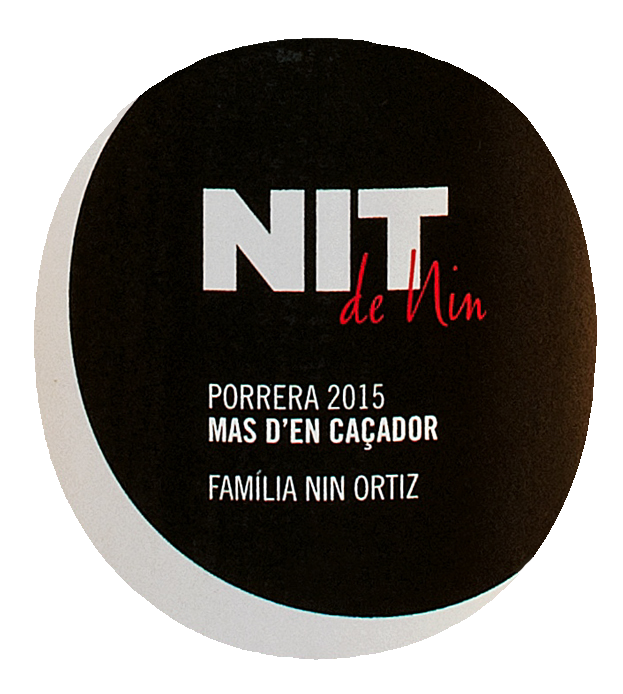 Familia Nit de Nin Mas d’en Caçador 2017 Porrera, Priorat, Spain
Familia Nit de Nin Mas d’en Caçador 2017 Porrera, Priorat, Spain
14.5% alcohol. This is the vineyard that Ester Nin began her project with in 2003. Centenarian vines at 600 m altitude, facing north, with 3% white grapes in the blend. Initially, she fermented the different varieties separately but now ferments them together. 100% whole bunch. Six to eight vines are needed to make just one bottle. This is a dark, concentrated wine. On the nose, there’s a touch of acid lift accentuating the tar and spice savouriness, which contrasts with the sweet but balanced blackberry fruit, with some raspberry and cherry too. In the mouth, it shows good concentration, with a savoury, spicy framing the sweet, quite elegant black cherry and blackberry fruit. It’s complex and structured, with some savoury meatiness and grippy tannins. It also has some ashy gravelly notes. Brooding and intense with so many layers of flavour. 94/100
–Dr. Jamie Goode, January 2021